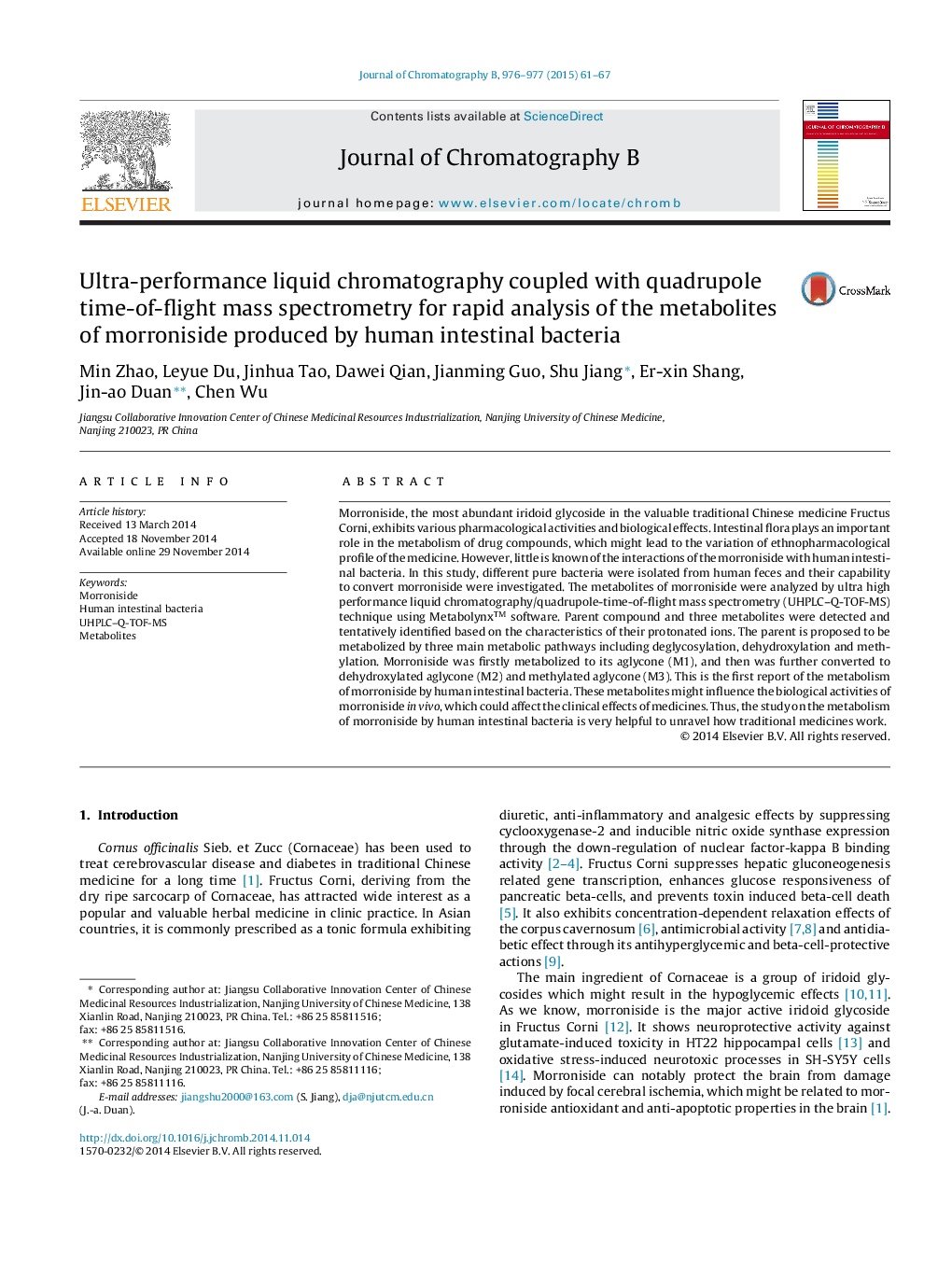| کد مقاله | کد نشریه | سال انتشار | مقاله انگلیسی | نسخه تمام متن |
|---|---|---|---|---|
| 1212302 | 1494067 | 2015 | 7 صفحه PDF | دانلود رایگان |
• Different pure bacteria from human feces were isolated to metabolize morroniside.
• UPLC–Q-TOF-MS was used for identification of morroniside metabolites.
• Morroniside was metabolized to be its aglycone (M1), dehydroxylated aglycone (M2) and methylated aglycone (M3).
• The metabolites and proposed metabolic pathways of morroniside by human intestinal bacteria were all firstly investigated.
Morroniside, the most abundant iridoid glycoside in the valuable traditional Chinese medicine Fructus Corni, exhibits various pharmacological activities and biological effects. Intestinal flora plays an important role in the metabolism of drug compounds, which might lead to the variation of ethnopharmacological profile of the medicine. However, little is known of the interactions of the morroniside with human intestinal bacteria. In this study, different pure bacteria were isolated from human feces and their capability to convert morroniside were investigated. The metabolites of morroniside were analyzed by ultra high performance liquid chromatography/quadrupole-time-of-flight mass spectrometry (UHPLC–Q-TOF-MS) technique using Metabolynx™ software. Parent compound and three metabolites were detected and tentatively identified based on the characteristics of their protonated ions. The parent is proposed to be metabolized by three main metabolic pathways including deglycosylation, dehydroxylation and methylation. Morroniside was firstly metabolized to its aglycone (M1), and then was further converted to dehydroxylated aglycone (M2) and methylated aglycone (M3). This is the first report of the metabolism of morroniside by human intestinal bacteria. These metabolites might influence the biological activities of morroniside in vivo, which could affect the clinical effects of medicines. Thus, the study on the metabolism of morroniside by human intestinal bacteria is very helpful to unravel how traditional medicines work.
Journal: Journal of Chromatography B - Volumes 976–977, 22 January 2015, Pages 61–67
